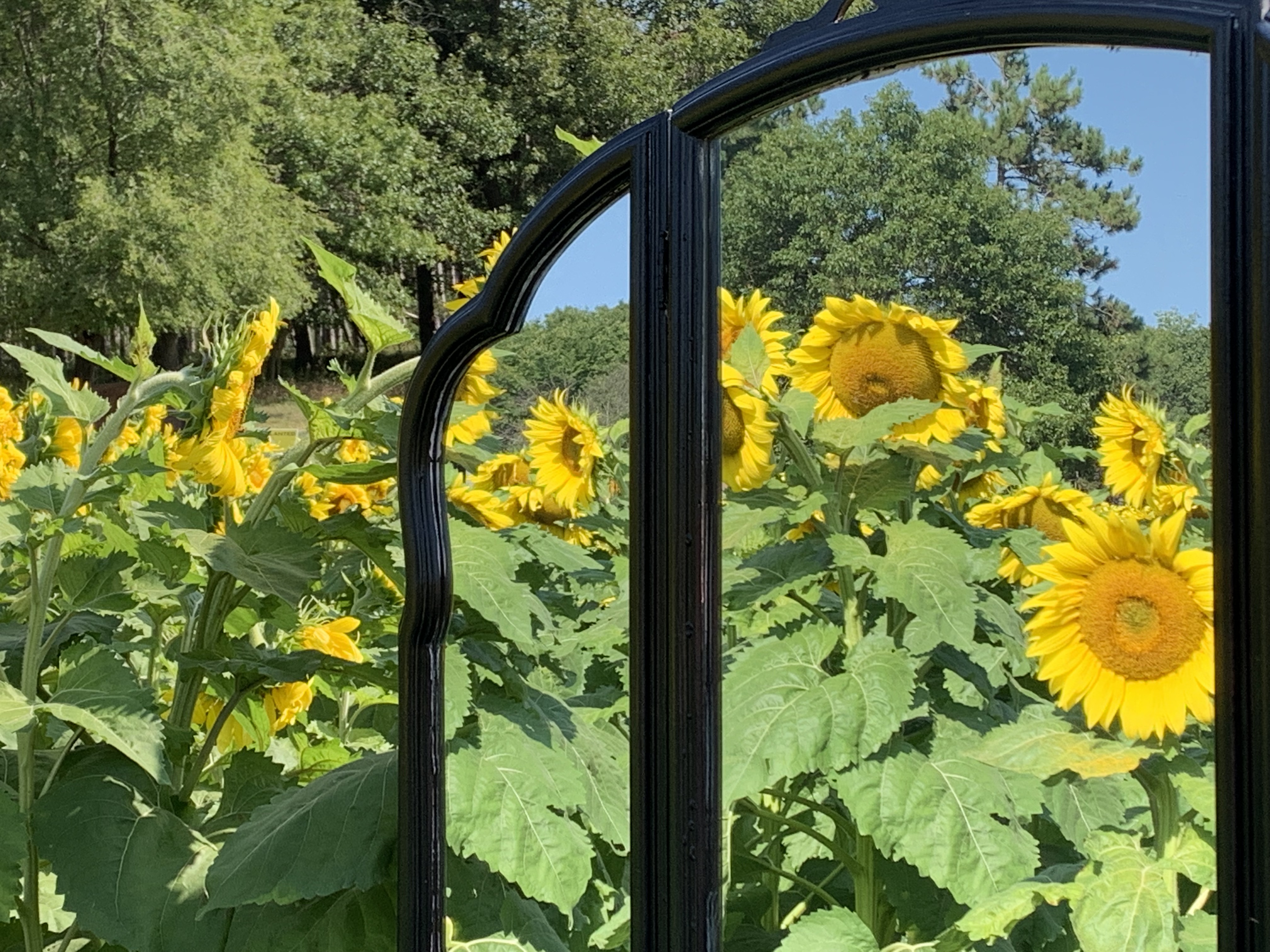
My client wanted a pair of unique nightstands.
After I explained that many desks can be split, removing the center section to create separate cabinets, she dropped this off. This gargantuan piece looked to be handmade and one-of-a-kind. Definitely unique! But it was aged and scarred. The mirrored panels had lost their silvering, greying the glass plates. The gold leaf (yes, gold leaf!) was peeling from the intricate detail work. As they say here in Minnesota, uff da. This project was going to be a LOT of work.

Step One: Separation
After confirming the paint did not contain lead, my next step was to remove the center drawer and supports to create the two nightstands. I used my circular saw to cut away the center section, leaving a lip that I anticipated would become the new edge of each cabinet top.

No such luck. Turns out the top of the desk was not solid wood, as we’d hoped, but an overlay of simple plywood. This wouldn’t make a very attractive edge! Grr… that meant I needed to make new tops for each nightstand.

Step 2: New Tops
Then again, that meant I got to use a new toy! Actually, my router isn’t new; I got it a couple of decades ago but was too intimidated back then to really appreciate its uses. I had a large tabletop left over from a previous project where I repurposed the base. It was just wide enough to accommodate two nightstand tops – serendipity! I cut rectangles the correct size with my circular saw and then routed the sides to form decorative edges.

Step 3: Sanding & Repair
So. Much. Sanding. (This was an accident – I’m usually much more careful about airborne particles!) Not only did I have to smooth where I removed old trim and supports, but I had to scuff-sand all the crevices to prepare for paint. I also had to sand all the golden trim to remove any loose leaf so the metallic wax I planned to apply wouldn’t flake right off. Then I repaired a few of the decorative bars lost from the mirrors with E6000® adhesive and used Elmer’s Pro-Bond® wood filler to patch any dings.

Step 4: The Gold Trim
As for the gold accents, it would have been cost-ineffective to reapply fresh gold leaf. Plus, my client wanted a more subdued gold so it wouldn’t be quite as brassy-looking. So I applied Rub ‘n Buff® metallic wax from Amaco® in the European Gold tint to tone down the look while at the same time refreshing the worn spots. You simply dab it on with an applicator and rub it in, like the name says.

What’s next, you ask?
As you can tell, this is a massive undertaking. Too much work for just one week and one blog post! Check back next week to see how this project turns out. Can this troubled task turn into a double delight for my client?
Send any Qs or comments about items on my blog via my contact page and follow me on Instagram (@serendipitysequelsmn).

